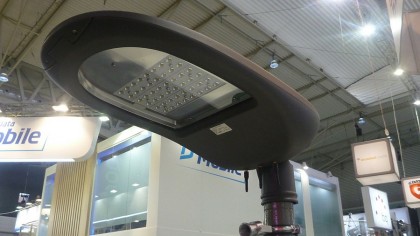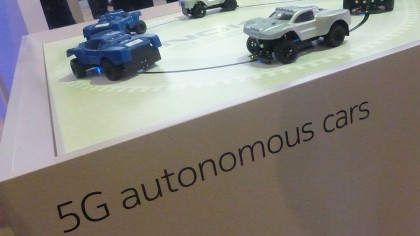How 5G will radically change the Internet of Things
Ultra-fast networks can't come soon enough for the IoT
The smart city
It's not just the cars that need 5G, but the urban infrastructure at large. 5G would allow cars, equipped with imaging and proximity sensors and able to communicate with fellow cars, and any smart devices, to 'talk' to the phones or wearables of pedestrians, and swerve out of the way if necessary.
Given a car that can communicate with anything, this could mean smart traffic lights that change in real-time to maximise traffic flow citywide, rather than to a pre-programmed set of assumptions, as they do now. Cars could go faster, syncing to each other as they move in convoys, while the city infrastructure itself could come alive.

Cue 5G's third main technology: mMTC (massive Machine Type Communications). "5G is expected to support massive Machine Type Communications, which will allows us to perform citywide monitoring and management of smart infrastructures," says Dr. Eddy Chiu, Manager Communications Technologies Division at the Hong Kong Applied Science and Technology Research Institute Company Limited (ASTRI). He also suggests solar street lights that come on and off as cars approach and depart.
The device-to-device revolution
However, it's that low-latency that brings us to two final examples of how 5G could supercharge the Internet of Things. "One example is device-to-device communications, which allows handsets to reliably communicate with each other even without cellular coverage," says Chiu.

At Mobile World Congress, TCL and ASTRI demoed just that, with devices communicating over radio, with TCL calling it "a foundation technology for the upcoming 5G standard". The tech will allow public safety communications when there is infrastructure damage, as well as proximity-based communications between vehicles, phones, or indeed anything. Real-time gaming between smartphones should also be possible.
Virtual reality healthcare
For all the convenience and efficiency that 5G could bring to the Internet of Things, it's in healthcare that the most wondrous example of real-time communications could exist.
"That low latency will have real-time applications in healthcare, such as remote operations using robotics," says Kurita, explaining that doctors and surgeons could – using a 5G network – examine a patient in real-time using a telepresence unit, and even perform an operation remotely.
Are you a pro? Subscribe to our newsletter
Sign up to the TechRadar Pro newsletter to get all the top news, opinion, features and guidance your business needs to succeed!
Think of a patient in a far-flung rural village without permanent medical personnel having a life-saving procedure performed by a surgeon in a remote city. The latter would require haptic gloves attached to a surgical machine, though the swapping of real-time brain scans over 5G – and perhaps even the creation of virtual clones of patients for surgeons to operate on – make 5G healthcare enticing.
Not just about speed
Unlike 2G, 3G and 4G, 5G isn't just about speed, which makes it more open-ended. "The driving force will be a business-orientated approach about how you make devices work better when you have real-time data and low latency," says de la Vega, suggesting that we could see 5G used sporadically rather than as huge national networks.
5G tests include plans to try out high-frequency signals in the millimetre wave frequency band that can provide extra bandwidth in limited geographical areas – such as industrial factories and facilities, or in sports stadiums. "A lot of 5G is going to be done with millimetre wavelengths, so it will be more focused in an area, and may be an overlay to 4G in areas where it's needed," says de la Vega.
Sure, 5G will be used by most people to swap GoPro videos and download movies more quickly, but there's evidence that ultra-fast networks could power an all-new, real-time IoT and enable other exciting concepts – such as autonomous cars, cloud robotics, remote healthcare and virtual reality – and even life-changing technologies. Either way, 5G looks set to fundamentally change how the IoT can, and will, work.
Jamie is a freelance tech, travel and space journalist based in the UK. He’s been writing regularly for Techradar since it was launched in 2008 and also writes regularly for Forbes, The Telegraph, the South China Morning Post, Sky & Telescope and the Sky At Night magazine as well as other Future titles T3, Digital Camera World, All About Space and Space.com. He also edits two of his own websites, TravGear.com and WhenIsTheNextEclipse.com that reflect his obsession with travel gear and solar eclipse travel. He is the author of A Stargazing Program For Beginners (Springer, 2015),
